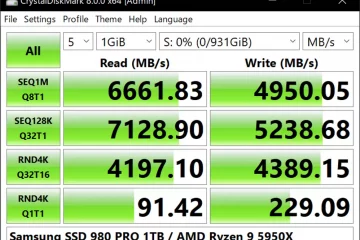Welcome, IT professionals! In this extended exploration of TPM 2.0 (Trusted Platform Module), we will delve deeper into its technical intricacies, advanced capabilities, and real-world applications. This journey will build upon our collective decades of experience in hardware, networking, programming, and security. We’ll explore the evolution, complexity, and pivotal role of TPM 2.0 in the modern IT landscape with the highest technical precision.
The Genesis and Evolution of TPM: Technical Context
The journey of TPM began in the early 2000s, spearheaded by the Trusted Computing Group (TCG) as a hardware-based solution to address vulnerabilities inherent in purely software-based security models. TPM’s inception aimed to provide a root of trust, a hardware root that ensures the integrity of computing platforms.
TPM 1.2, the precursor to TPM 2.0, focused on a fixed set of cryptographic algorithms and use cases. However, as computing environments became more diverse and complex, a more flexible and scalable solution was needed. Thus, TPM 2.0 was released in 2014, introducing significant advancements:
- Algorithm Agility: TPM 2.0 supports a wider range of cryptographic algorithms, including stronger algorithms like SHA-256, SHA-384, and SHA-512, and even elliptic curve cryptography (ECC), which provides stronger security with smaller key sizes.
- Enhanced Authorization: It offers a more granular and flexible authorization hierarchy, allowing multiple hierarchies for different security domains, such as storage, endorsement, and platform hierarchies.
- Broader Device Compatibility: The adaptable framework of TPM 2.0 accommodates a wider range of devices from low-power IoT devices to high-end enterprise servers, adapting its features to the specific security requirements of each.
The Technical Intricacies of TPM 2.0
TPM 2.0 is comprised of several core components that work in unison to provide hardware-rooted security:
1. Cryptographic Processor
The cryptographic processor within the TPM handles essential operations:
- Key Generation: Generates asymmetric (RSA, ECC) and symmetric keys within the secure confines of the TPM.
- Encryption and Decryption: Processes sensitive data using these keys without exposing private material to the host system.
- Digital Signatures: Creates and verifies digital signatures, providing authenticity and integrity for data and software components.
2. Secure Storage
TPM 2.0 features a secure non-volatile storage that safeguards:
- Encryption Keys: Ensures that cryptographic keys cannot be extracted from the module.
- Certificates and Credentials: Stores sensitive credentials and certificates used for attestation, authentication, and encryption.
- Sensitive Data: Holds configuration settings and system state information protected by the TPM.
3. Platform Configuration Registers (PCRs)
PCRs are specialized registers for storing measurements:
- Measurement Logging: During the boot process, TPM 2.0 records hashes of firmware, bootloaders, drivers, and configuration data in PCRs.
- Integrity Verification: Later, these values can be compared against known-good baselines to verify that the system hasn’t been tampered with.
- Dynamic Extension: New measurements can be “extended” into PCRs using operations like
TPM2_PCR_Extend(), preserving a chain of trust.
Advanced Capabilities and Techniques of TPM 2.0
Multiple Cryptographic Algorithms and Flexibility
TPM 2.0’s ability to support multiple cryptographic algorithms means:
- Algorithm Negotiation: During an operation such as key generation or signing, the TPM negotiates the strongest algorithm supported by both the TPM and the requesting software.
- Post-Quantum Preparedness: Its algorithm agility allows for future integration of post-quantum cryptographic algorithms as standards evolve, ensuring long-term resilience against quantum threats.
Enhanced Authorization and Policy Mechanisms
TPM 2.0 supports complex authorization policies:
- Policy Sessions: Use policy sessions to enforce conditions under which operations can be executed, such as time constraints or physical presence checks.
- Hierarchical Authorization: Different hierarchies (storage, endorsement, platform) can delegate permissions, enabling fine-grained control. For example, a platform hierarchy might restrict firmware updates, while a storage hierarchy controls encryption key usage.
- Policy Counters: TPM 2.0 includes a monotonic counter and a clock to implement policies that limit the frequency of operations, preventing certain types of brute-force attacks.
Secure Boot and Attestation
TPM 2.0 is instrumental in secure boot and remote attestation:
- Secure Boot: The TPM validates each stage of the boot process against PCR values. If a measurement deviates from the trusted baseline, the system can halt the boot process or trigger a security alert.
- Remote Attestation: TPM 2.0 can generate a signed attestation report containing PCR values, device configuration, and nonce values provided by a remote verifier. This proof of integrity reassures remote services that the device hasn’t been tampered with.
Secure Key Storage and Management
TPM 2.0 greatly simplifies key management:
- Key Hierarchies: Establishes a tree-like hierarchy of keys, where a root key can protect subordinate keys. Each key can have policies defining its usage.
- Non-Migratable Keys: Keys generated inside TPM can be marked non-migratable, meaning they cannot be exported outside the TPM, reducing exposure to external threats.
- Sealed Storage: TPM can encrypt data such that it’s only accessible when the system is in a specific state (e.g., certain PCR values), thus binding data to platform integrity.
Practical Applications and Strategies Enhanced
TPM 2.0’s robust feature set finds practical applications across various sectors:
Enterprise and Endpoint Security
- Windows 11 and Secure Boot: TPM 2.0 is a hardware requirement for Windows 11, ensuring that secure boot and BitLocker encryption keys are stored in hardware, reducing software-level vulnerabilities.
- Device Encryption: Encryption keys stored in TPM prevent unauthorized access to sensitive data even if the device is physically stolen.
Network and IoT Security
- Device Identity: In IoT, each device equipped with a TPM 2.0 can be uniquely identified and securely authenticated. This helps prevent spoofing and unauthorized device access.
- VPN and Network Access: TPM-based credentials can be used to enforce strong device authentication for VPN access and network entry, limiting access to authorized hardware only.
Software Development and Deployment
- Code Signing: Software vendors can use TPM 2.0 to sign code, ensuring that only trusted and untampered software is executed on a device.
- Secure Deployment: During software deployment, TPM attestation can verify that the hardware and software configuration match expected parameters, reducing supply-chain attacks.
Navigating Complexities: Advanced Techniques in Action
Attestation and Policy Enforcement
Using TPM 2.0 for attestation involves:
- Measurement Collection: Hashing of the BIOS, bootloader, OS kernel, and critical drivers during startup.
- PCR Extension: Each measurement extends a PCR, creating a chain of trust.
- Quote Generation: The TPM creates a “quote” — a signed statement of current PCR values signed by an attestation key.
- Remote Verification: A remote server, possessing the corresponding public key and expected PCR values, verifies the quote, ensuring the device’s integrity.
Key Management with TPM 2.0 APIs
Leveraging TPM 2.0 APIs (using TSS2 stack or libraries like IBM’s TPM2-TSS) allows for:
- Key Creation:
TPM2B_PUBLIC outPublic;TPM2B_CREATION_DATA creationData;TPM2B_DIGEST creationHash;TPMT_TK_CREATION creationTicket;TSS2_RC rc = Tss2_Sys_CreatePrimary( sysContext, &inSensitive, &inPublic, &outsideInfo, &creationPCR, &outHandle, &outPublic, &creationData, &creationHash, &creationTicket, NULL);
This snippet creates a primary key within TPM, ensuring it’s generated and stored securely without exposing private material. - Policy Setup: Using
TPM2_PolicyCommandCode(),TPM2_PolicyPCR(), and other policy commands to define the conditions under which certain keys can be used, enforcing fine-grained control over operations.
Integrating TPM 2.0 into Modern Infrastructure
- Cloud Integration: Cloud providers and hybrid environments leverage TPM-backed virtual Trusted Platform Modules (vTPMs) to bring hardware-level security benefits to virtualized environments.
- Edge Computing: Edge devices often face physical security threats; integrating TPM 2.0 can ensure that even if an edge device is compromised, sensitive keys and critical operations remain secure.
The Future of TPM 2.0: Forward-Looking Considerations
As we look toward the future, TPM 2.0 is set to become even more integral:
- Quantum-Resistant Cryptography: TPM 2.0’s algorithm agility positions it well for adopting quantum-resistant algorithms. Developers and security architects must plan for seamless transitions to post-quantum cryptographic standards as they mature.
- Evolving Standards: Ongoing work by the Trusted Computing Group and open-source communities will enhance TPM functionality, expand API capabilities, and improve interoperability across diverse hardware and software platforms.
- Broader Adoption in Consumer Devices: As the Internet of Things (IoT) expands, TPM 2.0-like functionality may become standard in consumer devices, driving the need for scalable attestation and key management solutions for billions of devices.
Wrapping Up
TPM 2.0 is not just a piece of technology; it’s a cornerstone of modern security architecture. For us, veterans of the IT industry, it presents both a challenge and an opportunity—a challenge to fully understand and implement its complex features, and an opportunity to elevate the security of our systems to unprecedented levels.
As we continue to navigate the ever-changing landscape of IT, TPM 2.0 stands as a beacon of security, integrity, and reliability. By embracing its advanced capabilities—cryptographic agility, enhanced authorization, secure boot, attestation, and robust key management—we can fortify our defenses against evolving threats and secure our digital universe.
Let’s embrace TPM 2.0 not just as a technology but as a crucial ally in our ongoing quest to protect the integrity, authenticity, and confidentiality of our systems and data.
- Trusted Computing Group – TCG official website.
- Microsoft TPM 2.0 Documentation – Microsoft’s TPM 2.0 documentation.
- NIST TPM Publications – NIST publications related to TPM.
- KrebsOnSecurity – Security-focused website.
- Schneier on Security – Bruce Schneier’s security blog.
- Dark Reading – IT security publication.
- SecurityWeek – IT security news and analysis.



2 Comments
stevieraexxx · May 19, 2023 at 7:26 am
When I originally left a comment I seem to have clicked the -Notify me when new comments are added- checkbox and now each time a comment is added I receive 4 emails with the same comment. Is there an easy method you can remove me from that service? Thanks a lot!
zack · August 1, 2023 at 10:38 pm
Sure, I removed you from the mailing list! 🙂